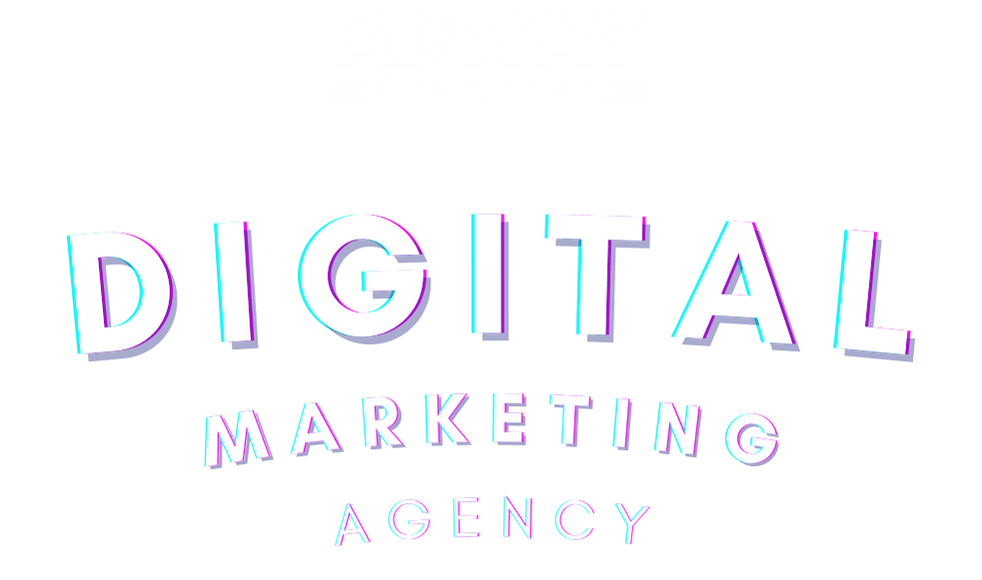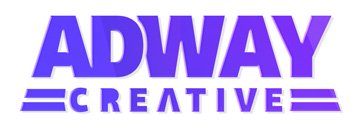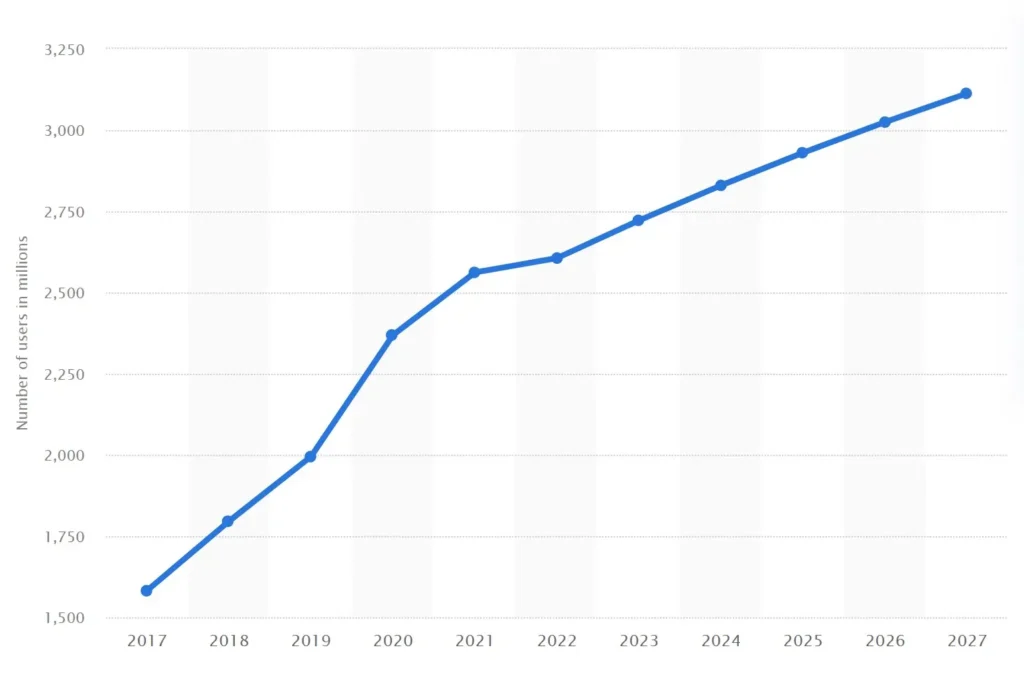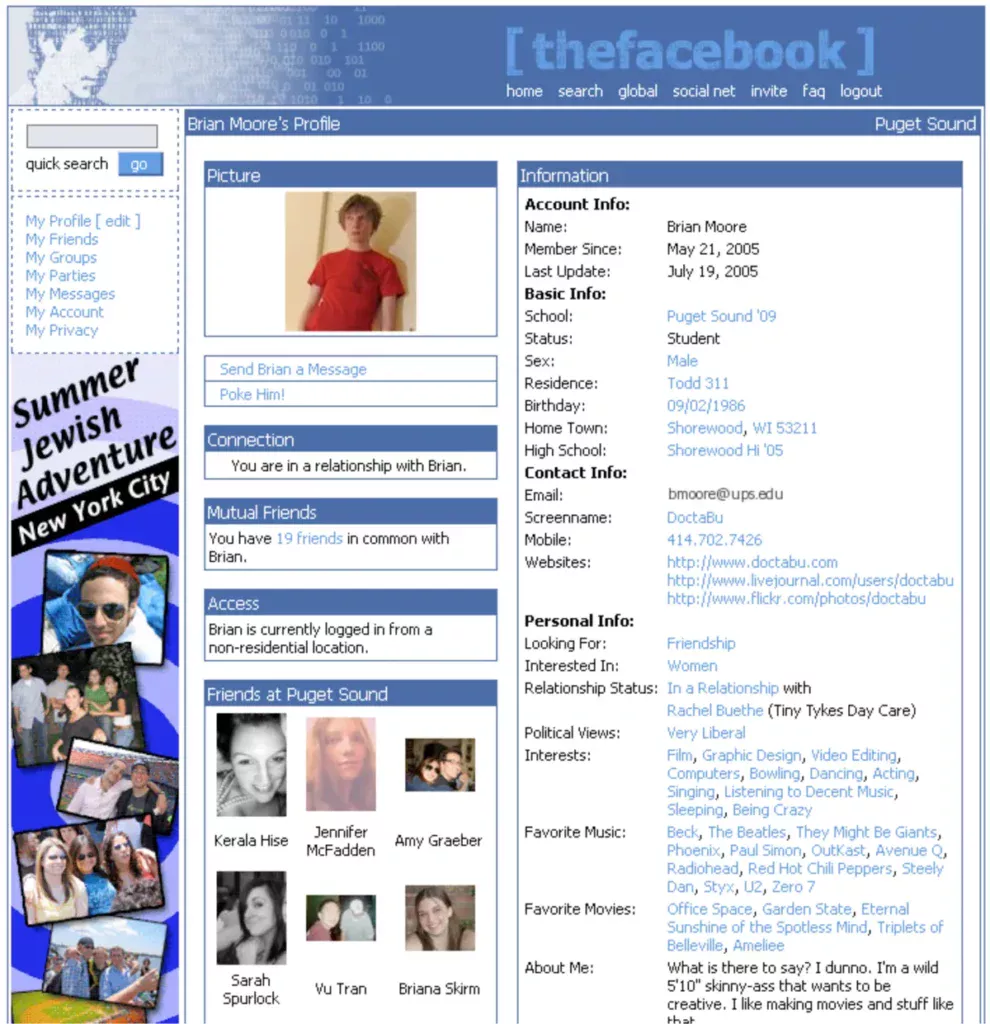
Audience Segmentation for Enhanced Inbound Marketing.
Maximize Marketing Impact through Expert Audience Segmentation.
Table of Contents

One powerful strategy that can significantly enhance your inbound marketing is audience segmentation. As Iliya Avramov, CEO and Founder of AdwayCreative Digital Marketing Company, states, “Audience segmentation is the key to unlocking personalized, targeted marketing that resonates with your ideal customers.”
Understanding Audience Segmentation

By segmenting your audience, you can tailor your marketing messages, content, and offerings to meet the specific needs and desires of each group, ultimately leading to higher engagement, conversion rates, and customer loyalty.
According to Stamat Viktoriia and Skoruk Anna, in their case study “Segmentation of the Target Audience as an Important Stage of Marketing in the Market of Hotel and Restaurant Business” accurate market segmentation and the determination of consumer groups that will become the target audience are crucial for increasing competitiveness and finding solutions to retain existing consumers and attract new ones.
Benefits of Audience Segmentation for Inbound Marketing Strategy

- Personalized Content: By understanding the unique characteristics and preferences of each audience segment, you can create content that resonates with their specific interests and pain points. Iliya Avramov emphasizes, “Personalized content is the cornerstone of effective inbound marketing. It allows you to build meaningful connections with your audience and establish your brand as a trusted resource.“
- Targeted Messaging: Segmentation enables you to craft targeted messaging that speaks directly to the needs and desires of each audience group. By delivering relevant and valuable information, you can capture their attention, build trust, and guide them through the buyer’s journey more effectively. As highlighted in the American Journal of Business Education in the article “The Importance Of Marketing Segmentation” , consumer diversity is growing quickly, and organizations must learn how to distinguish between their products and services and those of the competition through effective marketing segmentation.
- Improved Conversion Rates: When your content and offerings align with the specific needs and preferences of your audience segments, you are more likely to convert them into leads and customers. James W. Peltier and John A. Schribrowsky, in their study “The use of need-based segmentation for developing segment-specific direct marketing strategies” support a segmentation approach to targeting customer groups on the basis of on both the needs underlying a purchase and descriptive buyer data.
- Enhanced Customer Loyalty: By consistently delivering personalized experiences and value to your audience segments, you foster a deeper connection and loyalty. As Iliya Avramov notes, “Audience segmentation allows you to build long-lasting relationships with your customers by demonstrating that you understand and care about their unique needs.“
Actionable Steps for Implementing Target Audience Segmentation

- Conduct Thorough Audience Research: Gather data on your target audience through surveys, interviews, analytics, and social media insights. Identify their demographics, behaviors, preferences, pain points, and goals to effectively segment the audience into smaller, more manageable groups for personalized content strategies. Stamat Viktoriia and Skoruk Anna emphasize the importance of obtaining high-quality information about the actual needs of consumers through segmentation methods.
- Identify Meaningful Segments: Analyze the data to identify distinct groups within your audience based on shared characteristics and behaviors. Consider factors such as demographics, psychographics, buying behaviors, and engagement levels. As mentioned in the American Journal of Business Education, marketers have to try different segmentation variables, alone and in combination, to effectively segment a market.
- Develop Buyer Personas: Create detailed buyer personas for each audience segment, outlining their key characteristics, challenges, goals, and preferred communication channels. As Iliya Avramov suggests, “Buyer personas serve as a compass for your inbound marketing efforts, ensuring that your content and strategies are always aligned with your target audience.“
- Adjust Your Content Strategy: Develop a content strategy that addresses the specific needs and interests of each segment. Create targeted blog posts, eBooks, webinars, and other content formats that provide value and solutions to their unique challenges. James W. Peltier and John A. Schribrowsky highlight the importance of exploiting the inherent competitive advantages of direct marketing firms, such as their ability to target very specific groups of customers with individualized marketing programs.
- Personalize Your Messaging: Craft customised messaging for each public segment across your website, email campaigns, social media, and other marketing channels. Use language, tone, and imagery that resonates with each group. Stamat Viktoriia and Skoruk Anna emphasize the significance of accurate market segmentation and the determination of consumer groups that become the target audience for effective personalization.
- Leverage Marketing Automation: Utilize marketing automation tools to deliver targeted content and offers to each audience segment based on their behaviors and preferences. Iliya Avramov recommends, “Marketing automation allows you to scale your individualised marketing efforts and nurture leads more effectively.“
- Continuously Refine and Optimize: Regularly analyze the performance of your segmented inbound marketing campaigns. Use data and insights to refine your segments, content, and strategies for continuous improvement and optimization and better understand your audience. As mentioned in the case study by Stamat Viktoriia and Skoruk Anna, the purpose is to develop insights and strategies that contribute to the competitiveness and sustainability of businesses in the dynamic market landscape.
Segmentation in Action. Real-World Example: Arte Market Case Study

AdwayCreative, a digital marketing agency, successfully implemented audience segmentation for their client, Arte Market, an online platform for art enthusiasts,sellers and buyers.
See the case study.
By conducting surveys and utilizing audience correlation analysis, AdwayCreative’s team gained deep insights into Arte Market’s target audience’s preferences, behaviors, and expectations.
The team at AdwayCreative employed a comprehensive approach (Hidden Wisdom Analytics) to audience segmentation, leveraging algorithmic database analysis and over 200 data points to deeply understand the intended audience and design content marketing accordingly.
Our team analyzed data from more than 50 platforms, including Google, Yandex, Facebook, and Instagram, through audience segmentation to identify specific behaviors and preferences of the audience, ensuring the right product or service reaches the right people at the right time.
Through behavioral segmentation (Behavioral Blueprint), AdwayCreative was able to craft bespoke and compelling content that resonated with the unique characteristics of different consumer segments.
We adapted the messaging and brand voice (Web Copy Optimization and Sales Copy Writing) to achieve a resonance that connected with Arte Market’s target clientele.
For instance, we identified a segment of young, tech-savvy art enthusiasts who were highly active on social media platforms. By creating visually appealing and engaging content that showcased the handpicked crafts and emerging shops in the platform, our team was able to capture the attention of this public segment and drive them to Arte Market’s platform.
Another segment identified by our Marketing Strategy Team, led by Elena Gotseva, consisted of seasoned hand made crafts collectors who valued exclusivity and individualised experiences, highlighting how audience segmentation helps cater to specific interests and preferences.
To cater to this segment, we developed targeted email campaigns that featured curated collections, exclusive deals, and early access to “Arte Exclusif” collections. By providing a sense of uniqueness and tailor-made experiences, AdwayCreative was able to foster loyalty and engagement among this high-value segment.
Through audience segmentation, our Social Media and PPC team, led by Elin Kachulski, prepared impactful content and strategies that resonated with each target segment. This approach led to a consistent increase in organic website visits, high engagement rates, successful activations and upgrades, reduced drop-offs, and enhanced seller success.
By leveraging the power of AI, our Marketing Analysts team, led by Gergana Dimitrova, was able to analyze vast amounts of data and identify patterns and correlations that informed their audience segmentation strategy. This allowed us to create targeted and tailor-made marketing campaigns that would resonate with Arte Market’s different customer segments, effectively using audience segmentation to understand and meet the specific needs of each individual group.
The success of the Arte Market demonstrates the effectiveness of audience segmentation process in enhancing inbound marketing efforts. Having a deeply understanding of your target audience and tailoring content and strategies to specific segments, your businesses can drive engagement, build loyalty, and achieve their marketing goals.
Conclusion

By dissecting your audience into smaller groups based on specific characteristics, behaviors, and preferences, they can unlock a realm of possibilities to genuinely comprehend their inbound strategy and audience, crafting content that deeply resonates with them.
Just as Iliya Avramov, the CEO and Founder of AdwayCreative Digital Marketing Agency, aptly articulates, “Embracing audience segmentation into your inbound marketing isn’t merely a passing trend; it’s an absolute essentiality for businesses striving to thrive in today’s cutthroat digital arena. By placing your audience at the core of your inbound marketing strategy, you unleash the full potential of your marketing endeavors and pave the path for sustainable growth.“
Let’s analogize it this way: envision yourself hosting a dinner soirée, aiming to curate an unforgettable experience for your guests. Would you serve an identical menu to all, disregarding their dietary inclinations or culinary preferences? Absolutely not!
You’d invest effort in comprehending each guest’s unique inclinations and customize the menu accordingly, ensuring every attendee departs feeling gratified and valued. Similarly, this principle underpins your inbound marketing approach.
By dividing your audience more effectively, you can devise bespoke content, messaging and marketing tactics that directly addresses the needs, interests, and pain points of each faction.
This tailor-made strategy not only enables you to boost your inbound marketing expenditure by targeting the precise audience but also amplifies your endeavors by fostering robust connections and yielding superior outcomes.
So, why procrastinate? It’s time to elevate your inbound marketing game by seamlessly integrating the different types of audience segmentation into your strategy. Whether it’s through email marketing initiatives, social media engagement, or content creation, the opportunities are boundless when you truly understand your audience on a deeper level.
Remember, audience segmentation is not a one-time affair; it’s an ongoing voyage of exploration and refinement. By consistently analyzing your audience data and honing your segmentation methodology, you’ll remain ahead of the curve and furnish experiences that engender loyalty, enticing your ideal clientele to return time and again.
Embrace the potency of audience segmentation, personalize your marketing and witness your inbound marketing endeavors soar to unprecedented heights, captivating the right audience, nurturing enduring relationships, and propelling sustainable growth for your enterprise.
Quick Answers: Your Article Recap FAQs Addressed.

Why Should You Embrace Audience Segmentation to Enhance your Inbound Marketing Efforts?
Audience segmentation operates akin to organizing a closet – grouping similar items together for easy access. In marketing, segmenting your target audience into smaller groups based on shared characteristics facilitates crafting customised content and messaging tailored to each group’s distinct needs and interests.
Consider this analogy: hosting a party entails serving different food and playing varied music for grandparents versus college friends. Understanding your guest list’s different “segments” enables tailoring the party experience, ensuring everyone enjoys themselves.
Incorporating audience segmentation into inbound marketing efforts allows you to:
- Create resonant content: Tailor content to each segment, boosting engagement and trust.
- Optimize budget: Focus on promising segments, maximizing marketing spend efficiency.
- Enhance conversions: Deliver pertinent messages at opportune moments, increasing conversion rates.
- Foster loyalty: Provide consistent value, demonstrating an understanding of customer needs over time.
As noted by Iliya Avramov, CEO of AdwayCreative Digital Marketing Company, “Audience segmentation is the key to unlocking personalized, targeted marketing.“
How Does Audience Segmentation Elevate Strategic Communication?
In strategic communication, audience segmentation ensures tailored approaches akin to customizing conversations at a networking event based on individual backgrounds, interests, and goals.
Dividing audiences into smaller groups based on demographics, psychographics, or geography facilitates crafting targeted content and messaging. This enables:
- Heightened relevance: Crafting messaging precisely addressing each group’s needs.
- Deepened connections: Establishing meaningful interactions, enhancing brand trust.
- Brand trust: Demonstrating understanding and reliability.
- Enhanced engagement: Driving higher engagement, conversions, and loyalty.
According to a case study by Stamat Viktoriia and Skoruk Anna, accurate market segmentation is vital for enhancing competitiveness and retaining existing consumers.
What Are the Primary Steps to Market Segmentation?
Market segmentation mirrors building a house – requiring a solid foundation and clear plan. Key steps include:
- Gather audience data: Utilize surveys, analytics, and social media insights to collect demographic, behavioral, and preference data.
- Identify segments: Identify distinct groups sharing common traits and behaviors.
- Create buyer personas: Develop detailed profiles reflecting unique needs and aspirations.
- Tailor marketing: Craft targeted content and tactics aligned with each segment’s preferences.
- Test and refine: Continuously monitor campaign performance, refining strategies over time.
Can Audience Segmentation Enhance SEM Effectiveness?
Indeed! Audience segmentation acts as a GPS for marketing efforts, guiding efficient navigation of consumer preferences and behaviors. It assists in:
- Identifying promising segments: Focusing efforts on segments most likely to convert.
- Crafting resonant messaging: Tailoring messages to meet each segment’s unique needs.
- Selecting effective channels: Choosing channels and tactics aligning with each segment’s preferences.
- Efficient budget allocation: Maximizing ROI by concentrating resources on high-converting segments.
According to James W. Peltier and John A. Schribrowsky, success in direct marketing lies in targeting specific customer groups effectively.
Is Audience Segmentation Essential for Every Inbound Marketing Campaign?
While potent, audience segmentation may not suit every inbound campaign. Factors influencing its necessity include:
- Audience complexity: The diversity and complexity of the target audience.
- Campaign goals: Objectives and goals driving campaign strategies.
- Resource availability: Marketing budget and resources allocated to campaign execution.
- Product nature: Nature of products or services being promoted.
As suggested by Iliya Avramov, while not mandatory for every campaign, buyer personas serve as guides for aligning strategies with target audience preferences.
How Can You Refine SMO Targeting and Segmentation?
Optimizing SMO targeting mirrors socializing adeptly – engaging with diverse groups based on their interests. Strategies include:
- Audience analysis: Utilize social media analytics for insights into demographics, behaviors, and preferences.
- Persona creation: Develop detailed personas representing distinct customers segments.
- Tailored content: Curate content resonating with each persona’s preferences.
- About the Author
- Latest Posts
- Client Results
With over fifteen years of hands-on experience in PPC, SEO, content marketing, and social media, Iliya Avramov has honed his expertise through strategic collaborations with global teams, mastering the art of blending traditional marketing strategies with cutting-edge digital services and technologies. His deep understanding of digital trends—backed by a proven track record of scaling campaigns for startups, B2B enterprises, and e-commerce brands—ensures businesses achieve sustainable growth, with measurable ROI increases of up to 540% in competitive online landscapes.
Iliya specializes in data-driven strategies, including advanced PPC optimization (e.g., Google Ads and Meta campaigns), technical SEO audits, content creation that drives organic traffic, and social media engagement that boosts brand loyalty. He has successfully managed marketing budgets from $1,000 to over $100,000 monthly, generating thousands of leads and conversions across industries like agriculture, health, and retail. Proficient in tools such as Google Analytics, SEMrush, Ahrefs, and AI-powered analytics, Iliya’s innovative approaches are supported by insights from leading resources like Google Search Central for SEO updates and Think with Google for data-driven marketing, ensuring alignment with the latest best practices.
His leadership has earned AdwayCreative numerous industry recognitions, including:
- 2020: Mastery in 3D visualizations and graphic design (Acquisition International).
- 2021: Media Innovator Award (Corporate Vision).
- 2022: Martech Award (Corporate Vision).
- 2022: Global Finance Award (Global Banking & Finance).
- 2023: Global Finance Award (Global Banking & Finance).
- 2023: Best Full Service Marketing and Advertising Agency (Innovation in Business).
- 2024: Bulgaria’s Most Reviewed Social Media Marketing Agency (The Manifest/Clutch).
- 2025: Advertising & Marketing Customer Satisfaction & Happiness Award (Global Banking & Finance).
Author Disclosure: Iliya Avramov is the founder of AdwayCreative and may reference agency services in his content. All opinions and strategies are grounded in over a decade of professional experience and independent industry research, with no undisclosed affiliations.
Publication Date: July 22, 2025 | Last Updated: July 22, 2025
- Generative Engine Optimization (GEO): How to Position Your Business in the Era of AI
- Why aren't your Google Ads generating conversions? 6 reasons and solutions.
- Google Ads Services: Drive Immediate Results with Expert PPC Management
- Google's Loyalty Program Update: How to Stand Out in Search | AdwayCreative
- Maximizing Google Ads ROI: The Power of MaxDiff and Conjoint Analysis
- Why Choose a Google Ads Management & Marketing Advertising Agency in 2025
See Real Results from AdwayCreative Clients
Curious what digital marketing can achieve for your business? Explore highlights from some of our recent success stories:
-
ROSELA | LEADING CUCUMBER PRODUCER GOES DIGITAL 🌱
Digital transformation brought 5,500+ new users, 1,808% boost in visibility, and 71% lower ad costs.
See more -
DA.CARE | SWISS STARTUP 👶
Swiss startup built a trusted UK brand with AI insights, 420+ subscribers in a month, and high-converting campaigns.
See more -
PARK&FLY ✈️
From zero to 100,000+ users and 40% repeat customers through integrated strategies.
See more -
ART:E 🎨
Over 500 new accounts activated, 12,000+ daily users, and reduced churn for an artisan platform.
See more -
MALEEVI TENNIS CLUB 🎾
220+ leads and 90% engagement growth in just 46 days.
See more -
MIRIAM SWIMWEAR 🩱
613+ new affiliate signups and acquisition costs as low as $0.32 per lead.
See more
See the full list of AdwayCreative case studies here →





